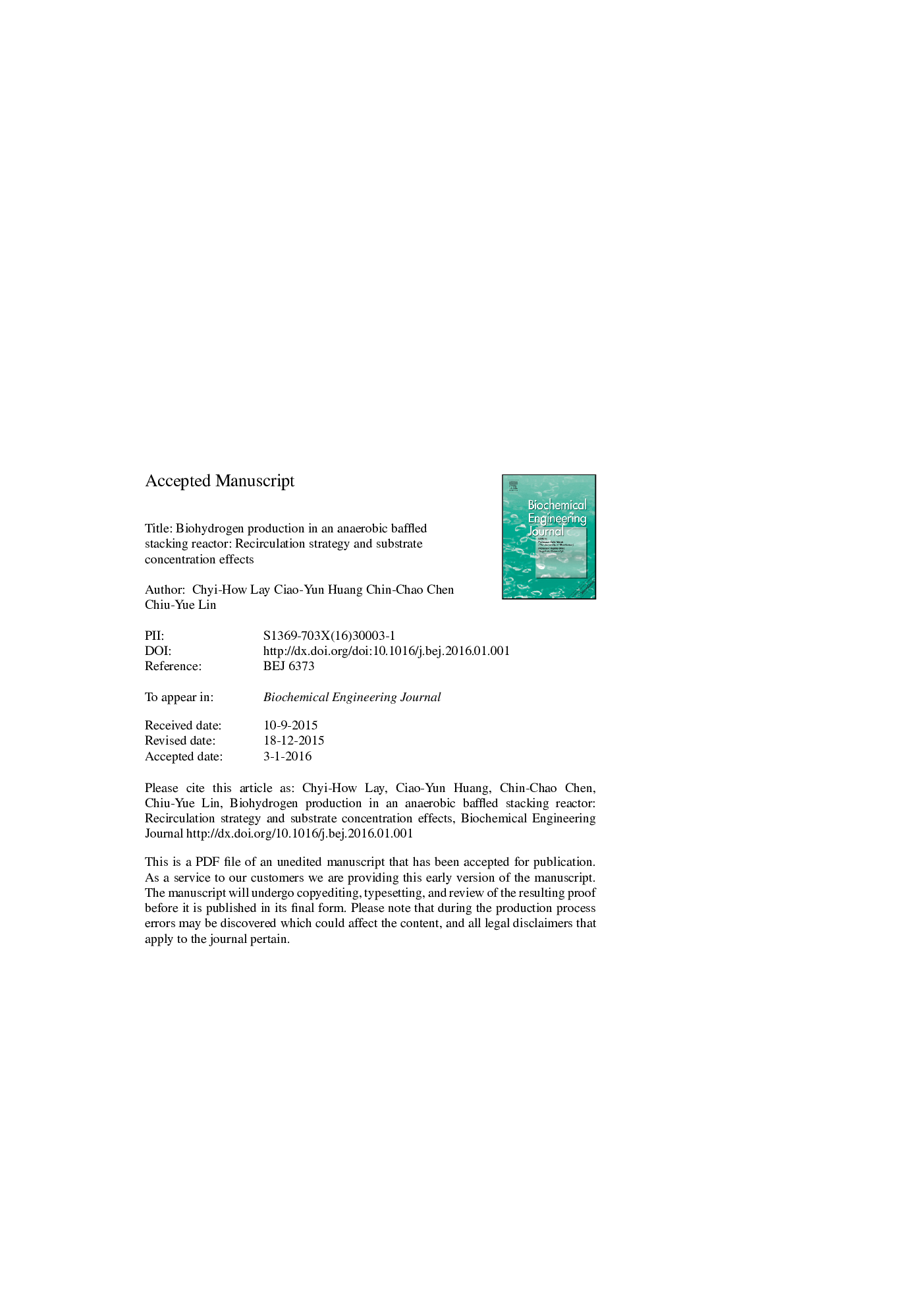| Article ID | Journal | Published Year | Pages | File Type |
|---|---|---|---|---|
| 6483963 | Biochemical Engineering Journal | 2016 | 23 Pages |
Abstract
This study designs a new type of anaerobic bioreactor based on prefabricated building wastewater treatment facility and plug flow bioreactor structures. This new reactor is named the anaerobic baffled stacking reactor (ABSR). The ABSR is divided into three reaction chambers. A liquid pump is established to recirculate the liquid in the second or third chambers to the first or second chamber to enhance the mass transfer reaction between the substrate and microorganisms. The recirculation pathway and substrate concentration effects of 10, 15, 20 and 30 g COD/L were investigated using sewage sludge as the seed inoculums at a hydraulic retention time of 8 h, pH 5.5 and temperature 35 °C. The results showed the biomass was accumulated at these recirculation strategies from the third to first, third to second and second to first chambers producing decreased carbohydrate utilization and hydrogen production efficiency. The third to first and second recirculation strategy could increase the disturbance efficiency, obtaining peak hydrogen content of 40 ± 2.4%, hydrogen production rate 10.9 ± 1.5 L/L-d and hydrogen production yield 1.7 ± 0.2 mol H2/mol Sucrose. The results reveals that ABSR has the advantages of biomass accumulation and well mixing. The ABSR is more suitable for anaerobic hydrogen production system.
Keywords
Related Topics
Physical Sciences and Engineering
Chemical Engineering
Bioengineering
Authors
Chyi-How Lay, Ciao-Yun Huang, Chin-Chao Chen, Chiu-Yue Lin,
